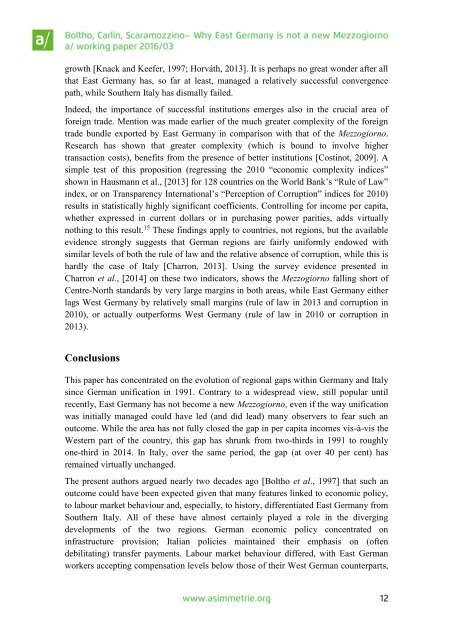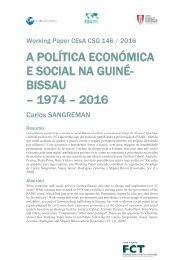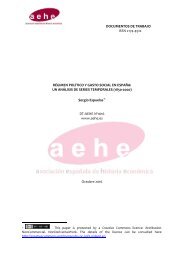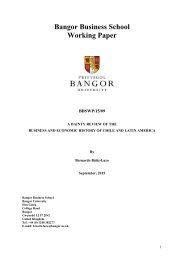n?u=RePEc:ais:wpaper:1603&r=his
n?u=RePEc:ais:wpaper:1603&r=his
n?u=RePEc:ais:wpaper:1603&r=his
Create successful ePaper yourself
Turn your PDF publications into a flip-book with our unique Google optimized e-Paper software.
growth [Knack and Keefer, 1997; Horváth, 2013]. It is perhaps no great wonder after all<br />
that East Germany has, so far at least, managed a relatively successful convergence<br />
path, while Southern Italy has dismally failed.<br />
Indeed, the importance of successful institutions emerges also in the crucial area of<br />
foreign trade. Mention was made earlier of the much greater complexity of the foreign<br />
trade bundle exported by East Germany in comparison with that of the Mezzogiorno.<br />
Research has shown that greater complexity (which is bound to involve higher<br />
transaction costs), benefits from the presence of better institutions [Costinot, 2009]. A<br />
simple test of this proposition (regressing the 2010 “economic complexity indices”<br />
shown in Hausmann et al., [2013] for 128 countries on the World Bank’s “Rule of Law”<br />
index, or on Transparency International’s “Perception of Corruption” indices for 2010)<br />
results in statistically highly significant coefficients. Controlling for income per capita,<br />
whether expressed in current dollars or in purchasing power parities, adds virtually<br />
nothing to this result. 15 These findings apply to countries, not regions, but the available<br />
evidence strongly suggests that German regions are fairly uniformly endowed with<br />
similar levels of both the rule of law and the relative absence of corruption, while this is<br />
hardly the case of Italy [Charron, 2013]. Using the survey evidence presented in<br />
Charron et al., [2014] on these two indicators, shows the Mezzogiorno falling short of<br />
Centre-North standards by very large margins in both areas, while East Germany either<br />
lags West Germany by relatively small margins (rule of law in 2013 and corruption in<br />
2010), or actually outperforms West Germany (rule of law in 2010 or corruption in<br />
2013).<br />
Conclusions<br />
This paper has concentrated on the evolution of regional gaps within Germany and Italy<br />
since German unification in 1991. Contrary to a widespread view, still popular until<br />
recently, East Germany has not become a new Mezzogiorno, even if the way unification<br />
was initially managed could have led (and did lead) many observers to fear such an<br />
outcome. While the area has not fully closed the gap in per capita incomes vis-à-vis the<br />
Western part of the country, this gap has shrunk from two-thirds in 1991 to roughly<br />
one-third in 2014. In Italy, over the same period, the gap (at over 40 per cent) has<br />
remained virtually unchanged.<br />
The present authors argued nearly two decades ago [Boltho et al., 1997] that such an<br />
outcome could have been expected given that many features linked to economic policy,<br />
to labour market behaviour and, especially, to history, differentiated East Germany from<br />
Southern Italy. All of these have almost certainly played a role in the diverging<br />
developments of the two regions. German economic policy concentrated on<br />
infrastructure provision; Italian policies maintained their emphasis on (often<br />
debilitating) transfer payments. Labour market behaviour differed, with East German<br />
workers accepting compensation levels below those of their West German counterparts,






